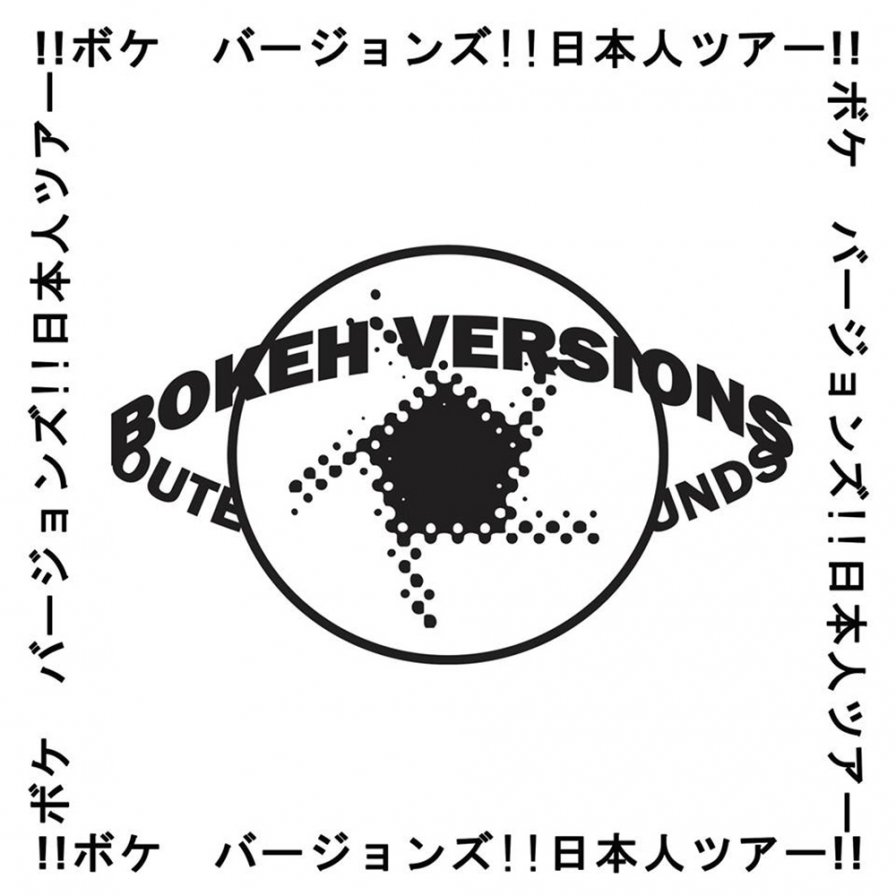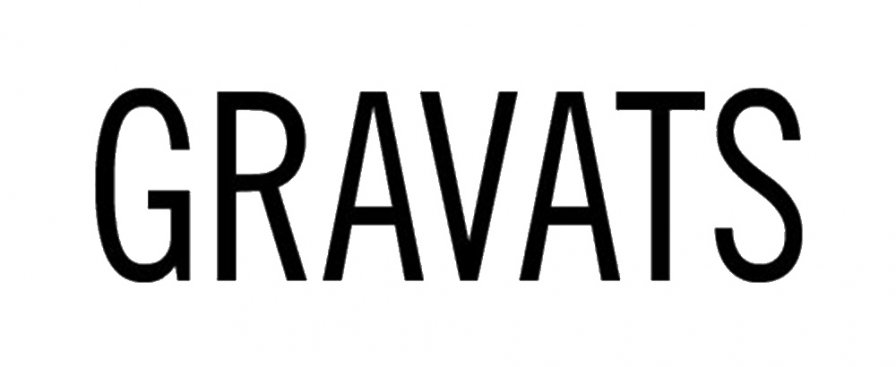We celebrate the end of the year the only way we know how: through lists, essays, and mixes. Join us as we explore the music that helped define the year. More from this series
[location: TMT Amphitheater, a giant outdoor arena located just outside Area 51 somewhere in New Mexico and filled to its 60,000-seat capacity on the hottest day of the year]
Me: Heyyyy, everybody! Welcome to TMT’s annual year-end festivities! Say, do all of you out there happen to like… music?!?
Crowd: (feverishly) YEEEEEAAAAAAH!
Me: Do you all like… tapes and vinyl RECORDS?!?
Crowd: (insanely) YEEEEEEAAAAAAAHHH!!
Me: Do you guys like… RECORD LABELS?!?!
Crowd: (cricket-ishly) *chirp… chirp… chirp…*
[end scene]
Yeah, I know. It’s a tricky relationship, these days. Music is free. Mixtapes are everywhere. Singles swim in the stream. Record deals are Volkswagen ads. Albums are movies.
But let’s be real: in this modern-day ocean of potential jams vying for our increasingly-diluted attention, true independent labels represent much more than just a business model. These labels are our goddamn life-preservers. I don’t know about you, but for me, the upshot to this rapidly increasing breadth of cheap streaming services, music making, and album-disseminating platforms is that it’s harder than ever for me to “feel like listening to some hip-hop” on my walk home and NOT just absentmindedly bid Siri to cue up fucking Ill Communication for the 900,000,000,000th time. I guess things have just gotten just so easy that, now, they’re impossible. It’s insane.
This is why it’s more valuable than ever to have a few honest-to-goodness curators carving us a path through the madness. Like those mysterious staffers in brick-and-mortar record stores who always seemed to have their finger not just on any-old pulse, but right on your jugular, the extremely committed and passionate people from the likes of Shelter Press, Roof Garden, Room40, Drawing Room, and BMB DEATHROW (just to name a cursory few) have scoured the various continents of planet earth in order to find and dish out the goods in such fan-friendly niches as experimental free-composition, noise-rock, shoegaze, cloud rap, and more. For these guys, it’s not about bandwagons and hype; it’s about holding up a microphone to all those hushed but meaningful genre conversations that would otherwise go undetected in this blustery climate, serving up the best tidbits and lovingly packaging them in durable contexts, reminding us that we are not consumers, or even “fans,” but patrons of someone’s personal art.
Likewise, for us here at TMT, this isn’t really a list that correlates easily or readily to the “hottest jams” we heard this year, or even necessarily the biggest, most impactful records we heard. It’s not a contest-list either, with ranks and weightings and numbers and all that. There’ll be other lists for those purposes coming soon, for sure. But this one — much like the two lists that preceded it in 2014 and 2015 — is meant to celebrate a fairly-casually chosen 15 labels that got our attention this year via their attempts (however Sisyphean) to pull and pluck at this universe full of invisible strings, to dam up the deluge into a few nourishing irrigation systems, to shape and mold so many identical balloons into unique animals. And all so that we as listeners can then be alchemically transformed into curators ourselves. So we can say, with all the machismo we can muster when a friend asks us whether we’ve come across any new ambient stuff they might dig lately, “Where you been?? Check this shit out.”
Bayonet

There’s a pop noise in the Greenpoint space between gritgrained industry and old London Planetrees that knows the histories at the waterfront and the way new boats hum on the patterns of waves. It’s the sharp shock before the gunpowder’s pop, the lightning bright of a couple discman childhoods, the logical conclusion that music production is community love. Katie Garcia and Dustin Payseur nurtured Captured Tracks and Beach Fossils for years; why shouldn’t indie nuptials birth indie labels? “We wanted something that was all-encompassing,” said Garcia about finding the founding’s name and logo. Bayonet is the all-encompassed New American Indie, a piercing name for an indelible sound that Bayonet is happy to chase and revise. Because it’s elastic, that Brooklyn bounce, Jerry Paper’s cartoon humanism thumbing our nose and then asking if we’re alright, Warehouse’s stuttered improvised solutions to our imaginary problems, the endless ventricled soul of the Frankie Cosmos songbook, an assertion that faith in our songs and our friends leave us better than when we started. We wanted something all-encompassing. We got Bayonet Records, the leaning in and learning, the processing of a world’s bigness into the progress of human relationships. When there’s love at the core of the sound, everybody sounds brilliant.
BMB DEATHROW

The ubiquity and convenience of streaming services make accessing new artwork so easy that it’s refreshing to be forced to perform online archaeology to find the tunes you’re looking for. Thankful as I am for the portable instant-gratification of my Apple Music account, I can’t help feeling a surge of excitement when an intriguing twee-pop tape or an early-aughts math rock 7-inch that I’d heard rumblings about fails to materialize after a quick search through my virtual libraries. There’s a sense of adventure to sifting through obscure message boards and abandoned Blogspots to find the .zip file you’re searching for, and no one knows how to harness that power of elusivity more effectively than web-rap veteran SpaceGhostPurrp, founder of influential “dark trap” record label Raider Klan Records and, more recently, SoundCloud collective Black Money Boys Death Row, a labyrinthine web of producers and emcees who cake hypnotic, dark-ambient drones in layers of fuzzed-out filth and muffled percussion. BMB’s sound is a sinister twist on the MySpace-era material churned out by Soulja Boy and Lil B, tinged with Glo Gang’s hazy drill hedonism. Affiliates’ discographies are often spread across multiple SoundCloud accounts, hosted by friends, buried in prolific back catalogues, and are sometimes deleted days after their conception. To follow BMB Death Row is to keep their web presence under constant surveillance or risk missing out on a clutch new cut.
Bokeh Versions

Physically speaking, I’ve never been across the pond, but artistically, I can’t avoid England for the life of me. Case in point: I just started reading Alan Moore’s Jerusalem, and if the label’s releases and NTS show offer any indication of where it’s going in the months to come, Miles Opland’s South London-based Bokeh Versions is set to provide the ideal local-global soundclash vibes I’ll need to project my higher self to astral Northampton and beyond for 1,266 pages. In an age where every other musician’s press release contains the word “dub” somewhere in it, Bokeh manages to spin the genre in ways that are original but true-to-form, vibrant but with a touch of morbidity, localized but out of this world yet still just worldly enough to place a phantom counter-punch upon the the chin of today’s xenophobic cluster-fuckery. In Glacial Dance Hall, Jay Glass Dubs showed us what the music would’ve sounded like had DJ Screw’s syrupy spirit somehow possessed King Tubby at the start of the 1970s. With Abraxo Ishara, Abu Ama “accidentally” spilled some delicious but irrepressibly pungent food you’ve never heard of all over your “good” jeans. Collectively through 2016, these acts and other outernational outliers like Voodoo Tapes and Aquadab and MCA have made Bokeh Versions a melting pot of some of the finest sold-out cassettes on this fucked-up planet of ours. Also, that thread!
DDS

Demdike Stare have succeeded remarkably in developing a label catalogue that not only aesthetically “matches” their own music, but branches off in a multitude of ways. For the past seven years, DDS has put out a relatively small number of releases (a bit over 20), a testament to the intelligent curation playing out in each new installment in the catalogue. A couple artists have become mainstays — Shinichi Atobe and Micachu, namely — and there seems to be a quite conscious mix of never-before-issued ephemera from years back (Orior’s Strange Beauty), as well as new recordings from contemporary artists (Equiknoxx’s Bird Sound Power). In a short period, the label has built a bold identity for itself, cohering the musical, conceptual, and visual. Perhaps this has something to do with Demdike Stare possessing such a focused aesthetic themselves, but no doubt artist-run labels can turn into a mish-mash of “fancy-that” selections or friend-of-friend go-tos. But perhaps it has something more to do with Demdike’s seriousness as collectors and diggers; they care about finding things, about bringing things to light that others don’t but should know about. New or old: what’s the difference with good music?
Drawing Room

Few labels find they get a second life. With Drawing Room, not only has the Brooklyn-based label spent five years back from the grave, but it has also become a more powerful and diverse entity. It’s not so much zombie aimlessly wandering in pursuit of one valuable resource, but rather the simplicity of someone being given a second chance at experiencing life anew. Which is why pinning down the label’s aesthetic is complicated. This year was a slower one release-wise for Jeff Kuykendall’s project of love, but it’s been one of the label’s best. Beyond closing out the year with new works from Ashley Bellouin and Brad Laner, releases from Country Florist and Samara Lubelski fostered more love for two artists firmly on the outside happily looking in. However, reissues of two long-loved Charalambides albums solidified Drawing Room as a label that’s as happy remembering the bygone past as it is exhilarated by celebrating what is new. It’s a rich tapestry of experimental, folk, and electronic from which Drawing Room has caped itself in its second life, and yet the life blood that keeps it going has yet to be sucked dry.
Editions Gravats

Editions Gravats is French. It began late 2014 with a 12-inch and a cassette. Last year, the label hijacked my radar with its ONLY 2015 release, Mane, Thecel, Phares by Black Zone Myth Chant (a.k.a. High Wolf). As I love a good mystery — especially with short-lived labels dropping excellence — Editions Gravats didn’t reemerge until February this year for more Black Zone Myth Chant, including a CD mixed by Low Jack. In March, I gripped a copy of 100% PRROMO! by DJ David Coquelin from Boomkat because of the intriguingly minimal/maximum cassette “art” and sales verbiage. HATED IT! After I gripped JE M’EN TAPE by DJ Coquelin ft. MC Cloarec — released by sister label, PRR! PRR! — and listened to it back-to-back with 100% PRROMO!, I finally recognized the comedy/horror of what Editions Gravats was narrating in the music community. Nothing shared on Twitter. No promotional nonsense. Not really sharing most of their music on SoundCloud or Bandcamp. Nonchalant in the most ultra way. Then came Clara!’s tape Reggaetoneras 2 (a follow-up to…) and Nique La Musique De France by Carval Tarek, featuring the same sort of break-style, transitionally mastered, poker-faced satire on gabber, noise, techno, dancehall, [FRENCH], advertisement, rave, etc. Heavy focus on etc. And if that’s not enough for you, they’ve a slew of NTS and RINSE mixes!
Hausu Mountain

Hausu Mountain has now been around long enough for it to be reliable: the instantly recognizable acid-baked 16-bit cover art; the prolific, manic electronic experiments; an aesthetic somewhere between sincere gearhead jams and high-concept internet trolling that has helped to define the somewhat insular world of present-day alt tape labels. But Hausu has always built its identity on surprises, and in 2016, these freaks from Chicago have surprised us once again by deepening their sound with some of the richest, most nuanced music in their already excellent catalog. Following 2015’s watershed moment of giving the world two already classic Eartheater albums, the label has held onto its signature hacked-MIDI style while reaching past it with records by ROM, Radiator Greys, and their ilk, pointing to deeper instrumental complexity while assuring us that Hausu is focused on deleting your brain and replacing it with some kind of damaged Giphy interzone (perhaps best represented by the profoundly disorienting In Dual Mono from Headboggle). Ending the year on a big high note, Hausu dropped solo tapes from the three members of flagship band Good Willsmith; easily among the best albums they have released to date, these diverse records (by ex-TMTer Mukqs, MrDougDoug, and TALsounds) served as both a summing-up and a mission statement of a (hopefully) still-young label, spanning both its most reflective and its most piss-taking moments. Keep evolving, Hausu Mountain, but also never change.
Memory No. 36 Recordings

One of 2016’s steadiest streams of outer-reaching experimentation came from Memory No. 36 Recordings, a digital-only (well, mostly digital: all six of their tapes are on sale for $2.50 a piece) label that somehow amassed over 40 releases, nearly doubling its catalog size (a feat that would make Illuminated Paths blush). The greatest part is that established artists are in the minority. Since founding the label in 2012, Ricardo Stacey has grown from the ground, organically. He has the uncanny ability to bring rad, quality first-time collaborations and projects into the light, like Keidian Syme & Buga, Ethrelite, Maxwell Sterling (see below), honestly too many to list here. Bands like Orca Life, Pregnant, and Five Star Hotel (also see below) all went through Stacey this year, and there’s no doubt it helped the label spread. But the groundwork is in the opportunities Memory No. 36 gives new projects. And for that, we thank you.
Northern Electronics

Abdulla Rashim’s Northern Electronics already has a reputation for wintry techno. Before this year, I’d already experienced Varg’s live set, a blown, thunderous, and boundary-defying conversation between functional house and lo-fi ambient that ventures far from the narrow passages charted in most of his recorded work. This year, his ჟინვალი (NE32) hinted through layers of obscurity at synth melodies, guitars, and sheets of noise, bringing them all to wash over one another like waves and, as if pressing into sand, continued softly in his special work of carving out passages. On the less reverb-soaked side, Ulwhednar’s Om Syndernas Förlåtelse (NE27) used repetitive synth lines, muddled recordings, and the sibilance of tape distortion to create meaningful drama within the limited confines of a small range of frequencies, carrying its hiss with pride and a kind of self-awareness. Förensligandet by D.Å.R.F.D.H.S. (NE28) was a sort of monolithic companion to a couple long, late bike rides; even though it’s only 67 minutes long, it’s wretched and inhabitable and makes those minutes feel like forever. The most song-oriented of all the label’s releases this year, Förensligandet, mixes dub techno long-jammers, like DJ tools for maladjusted loners, with atmospheric synth pieces and the occasional few-minute stretch of feedback. Coming together on compilation Scandinavian Swords II (NE30), Rashim, Varg, the icy and prolific Acronym, and others like Fatal and Korridor display their bold similarities and differences, making a case for their austere aesthetic program. That compilation is a good place to start on a label that I think has been great for a few years, but which had a particularly great 2016 and is well-positioned to broaden its audience.
Phinery

The concept of vastness, as an epistemological tool, contains within itself a curious tension. It is the name we use for those things whose scale surpasses the economy of our imagination to meaningfully engage with it. We characterize something by our inability to adequately characterize it. In 2016, no other label brought us into such near consideration of vastness than Denmark’s Phinery. The austerity of their approach — blank in white and curatorial embellishment conspicuously absent — performs the re-/de-contextualizing work of the gallery space and demands we furnish it ourselves. Space becomes vast in its union of abundance and absence — Öd’ und leer das Meer. Sound becomes vast in its insistence on conquering space. Along that line, much of Phinery’s output this year subverted the sublimity of insignificance and rendered vastness in a sculptural manner. Creating and molding shifting and bounded universes from the dura materia of empty air, an apollonian air of playfulness seizes academic compositions, ambient arcologies, and all environs intervening. The diversity of method — ambient, glitch, drone, collage, techno, New Age over two dozen releases — only serves to underscore the unity of concept. Frigid and friable, volcanic and volute, the sounds curated within Phinery’s menagerie stretch and abstract in strange, frustrating, and alienating ways. The slow expressionistic guitar of øjeRum’s Sne builds to bucolic hissing caries; Mukqs (ex-TMTer) and DJWWWW ravage the world with their kaleidoscopic cyclones of samples; and Chaise almost sounds like a bunch of songs with its collection of noise-inf(l)ected melodies. Structural and textural, Phinery’s sound has sketched massive worlds of endlessly propagating ambient washes and granular miniatures of interlocking synthesized chirps. Somewhere between the somnambulant serenity of Inner Travels and the searing pointillism of Redundancy Studies, it’s plain to see that Phinery, as devoted to adventurous electronics as ever, delivered a year of unmatched breadth and depth.
PTP

PTP (f.k.a. Purple Tape Pedigree) has been on a hot-streak since the second week of this year. Head honcho Geng has expanded the label to encompass limited-run tape releases, two excellent remix EPs, and an album-cum-augmented reality app. He’s also found the time to unleash DJ NJ Drone’s slippery trance fantasias, Endgame’s drum-drenched lullabies, and Celestial Trax’s woozy grime mutations on the world. PTP’s releases are bound together by an exploratory approach to club sonics, a desire to construct new languages, forms, and affects for our networked, asymmetric, and mediated contemporary. These sounds are birthed in the club before fracturing, sending jagged shards across fiber-optic cables and into bodies, bedrooms, and broadcasts the world over. 2016 has seen some lamentations for the aesthetic reification of the “deconstructed club” moment, but PTP remains committed to the radical potentials of this music — its freeform approach to composition, its emotional capaciousness, and its ability to unsettle conventions both inside and outside the club. It’s an approach that privileges a critical orientation toward the contemporary, a mode that becomes increasingly vital as the West veers further toward populism and hysteria. So whether you needed bleeding-edge sonics or recuperative smoothie recipes to get you through the year, PTP had the hook-up.
Roof Garden

Earlier this year, on March 7, SoundCloud label Roof Garden Records sprouted onto the scene with two tweets. They first announced the release of their debut single, “Seafood Counter,” by DJ Supermarket, one of the many musical aliases of the label’s founder, Jack Fawcett, while the second basically explained everything else we wanted to know. Tweet Two’s one liker knew a good thing, as in nine short months, Roof Garden’s self-described “techno-pastoral” feed has grown to include two handfuls worth of EPs and albums, double that amount of singles, and a cassette co-released with Ontario’s Poor Little Music. Roof Garden is a testament to all the labels and loners out there that are still doing SoundCloud right. Their roster includes a who’s who of what’s good, including PEDICURE’s founder Treasure Hunt, the unstoppable Meme Vivaldi, and hydroponic hype-guy HERBARIUM, who has extensively released music on Eco Futurism Corporation, a.k.a., Roof Garden’s conceptual brethren. The releases featured here easily fade between bliss-y ambience, high baroque, nu-age vapor, grit, grime, groove, some sticky-fingered digital collage, and a rendering of a rendering of twin koi tracing figure eights in a pond in the plant-filled atrium of a high-rise office building.
Room40

Since its founding in 2002 by Australian composer and sound artist Lawrence English, Room40 has been delivering brilliantly wrapped “sound parcels” that have demonstrated a shrewd understanding of both sound and space. Humbly boasting phenomenal releases, including Bee Mask’s hypnotically cascading dual piece Vaporware / Scanops, Marina Rosenfeld’s remarkably dynamic turntable masterwork Plastic Materials, and DJ Olive’s mesmerizing ambient trilogy on sleep (Buoy, Sleep, and Triage), Room40 remains a quietly bubbling source of cutting-edge sounds and captivating environmental studies. This year’s batch of gifts finds guitarist Mike Cooper deconstructing and expanding on blues music on New Guitar Old Hat Knew Blues, electroacoustic legend David Toop contemplating music’s trembling vivacity on Entities Inertias Faint Beings, and Japanese post-minimal newcomer Ytamo conjuring spiraling sound growths on Mi Wo (released on its Someone Good imprint). While many of our other favorite labels this year have (quite successfully) gone BIG, Room40 stayed at home with its doors and windows open, waiting for any passersby who could pick out a simple bird call amidst a roar of compressed digital noise. Those who stopped were rewarded with a rare kind of excellence that satiates without advertisement nor discrimination. I, for one, haven’t stopped coming back since.
Shelter Press

As the music market has segmented itself into an intricate network of niches and brands over the past several decades, small record labels have come to act as conduits for their preferred avenues of style and aesthetic. Labels delineate themselves from one another by tracing discrete symbolic pathways with which to uncover their artists’ work, and yet Shelter Press, the French outlet operated by Bartolomé Sanson and Félicia Atkinson, have built their presence by shearing all but the barest traces of iconography from their output. You won’t find the word “label” anywhere on Shelter Press’s website — in their words, it is a “publishing / curatorial platform,” and this type of minimal rethinking can be applied to everything the outfit does, from albums and novellas to public workshops and exhibitions. Whether it’s via the disquieted field studies of Atkinson & Jefre Cantu-Ledesma, the verbal collage wonk of Matt Carlson, or the spliced rhythmic chaos theory of D/P/I (R/I/P), Shelter Press pulls fibrous strands of sound from the ether of reality and magnifies them further and further in the hopes that we might eventually be able to see those vibrations’ very DNA. If there is any aesthetic to guide us through their mystery, it is the aesthetic of the world itself, the routine giving way to a beautiful overflow, a cartography of discovery and significance.
T R R U E N O

If nothing else, the penetration of cyberspace into the quotidian has provided us with a chance to continuously project and discover our identities; a screen and a window feeding from and back into our realities, a realm to produce and consume the objects of our desire. Last April, the Buenos Aires government banned “all commercial activities involving live or recorded dance music,” a ruling that was later softened into a legislative standstill tantamount to the same prohibition. Thus, it is natural for Buenos Aires-based collective T R R U E N O, a shapeshifting alliance of mixed media artists and electronic musicians, to find in technology what their materiality denies them. Although they had existed for a couple of years as a meeting of like-minded creatives, T R R U E N O finally gelled into a label in 2016, something they commemorated with the release of their sampler MECHA 1. Comprising just under a dozen acts, some of the label’s music can be traced to fellow globalist subvertors NON, with a recognition of reguetón as Latin America’s pop lingua franca encapsulating T R R U E N O’s experimentalism. A couple of EPs by QEEI and Astrosuka & Ormamenti D’Oro round-out a landmark year for the young label, in which they crafted new emancipation spaces out of their immediate anxieties. Their music — a mixture of daring hybrids appropriated from around the world and inadvertent autochthonous mutations — going on to promise a horizon where a freer articulation of self and desire is possible through the sounds of the Global South.
We celebrate the end of the year the only way we know how: through lists, essays, and mixes. Join us as we explore the music that helped define the year. More from this series
